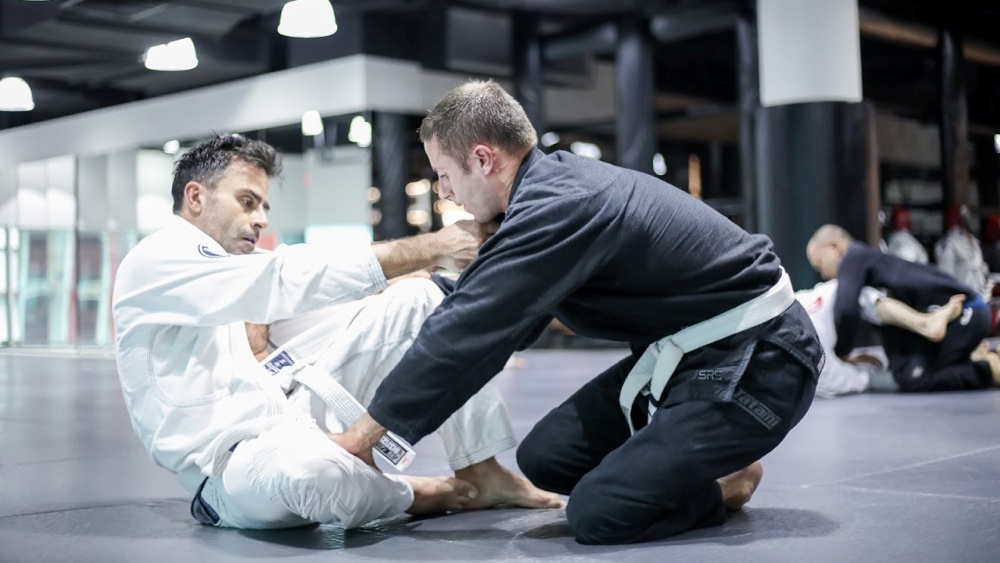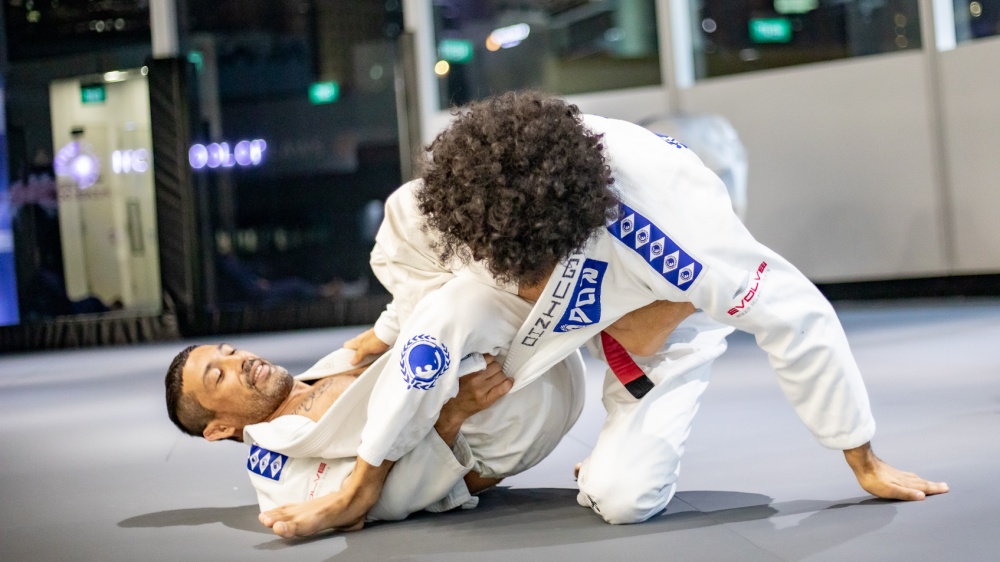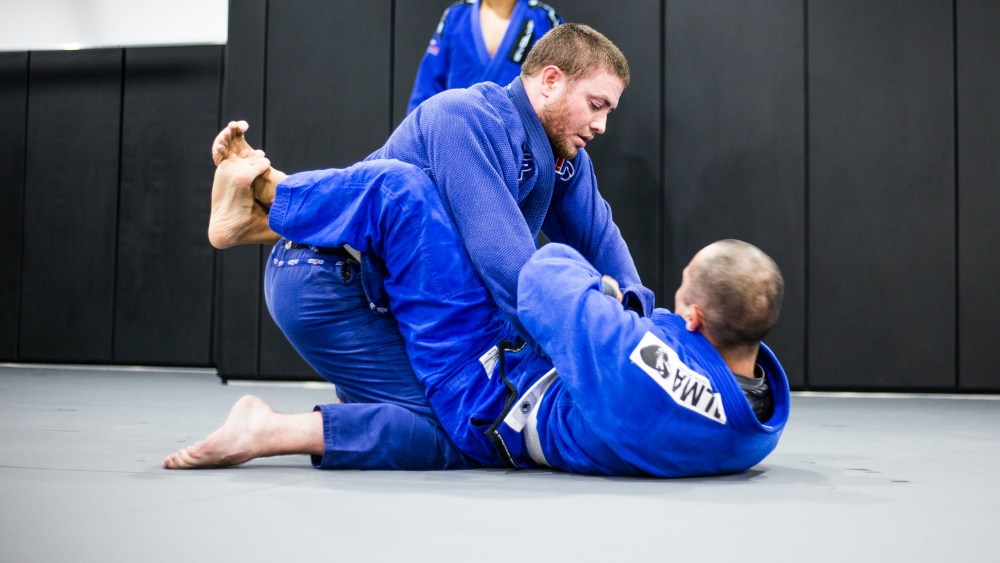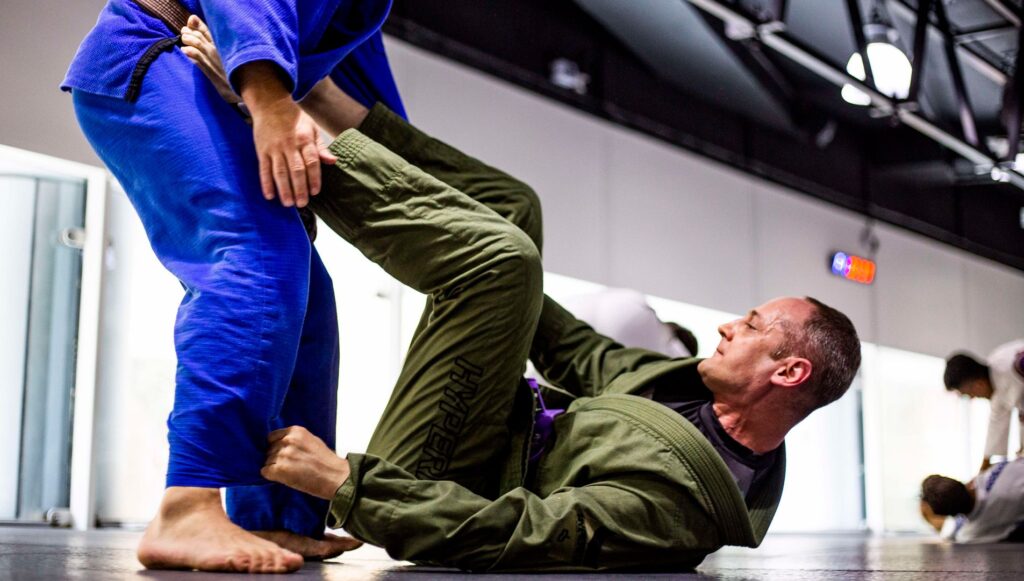The guard is an invaluable skill every BJJ practitioner must have in their arsenal. While the most ideal position in BJJ is to be the grappler on top, you’ll inevitably have to play the bottom position, especially against bigger and stronger opponents. The guard is an inherently defensive position and is an entry point if you want to go on the offensive.
Either way, as modern guards get increasingly advanced, working on your guard game will level up your guard retention skills, making it easier for you to effectively stop the opponents from passing to more dominant positions. In this article, we will talk about how your chosen BJJ guards determine the style you play.
Guard Play And Leg Positioning In BJJ
It is essential that your game is congruent with the guards that you play. Similar to building a house, your building blocks (guards) should work hand-in-hand so that you can effectively attack and defend from all positions. There are three main subtypes when playing guard.
1) The Inside Position
It is when you put your feet on the opponent’s leg. Some examples are the shin-to-shin, butterfly guard, or half butterfly. Each of these positions requires you to put your feet on the inside.
2) The Half Guard
Half guard is where you place one foot on the inside and one outside. If the opponent stands up, it puts you in the sit-up guard, a position that grapplers play when the opponent is overly aggressive, coming forward to attack by attaching themselves to the opponent’s near leg. Other examples are the reverse de la Riva and deep half guard. Deep half guard is a position where you place yourself underneath the opponent’s body and trap the opponent’s leg while extending it using both legs (one leg inside and one leg outside).
3) The Outside Positioning Guards
Some examples are the de la Riva guard, K-guard, and closed guard. Generally, when you’re playing with outside leg positioning, other outside leg positioning guards will link really well with each other, making a game based around it an excellent option.
Playing inside positions like the shin-to-shin will suit well playing around the butterfly guard. Likewise, playing the half-guard will work well with the sit-up guard, deep half guard, and reverse DLR. The main reason is when you start the match, or when the opponent comes towards you, one of the first choices you make is to decide on the positioning of your feet (inside, half guard, or outside positioning). Although you can link one in and one foot out positioning with no difficulty, like the half guard or reverse DLR with an outside positioning guard.
Similarly, if you’re playing half butterfly, an inside leg positioning guard should link in with a half guard. What rarely links and fits well is playing the butterfly and K-guard where your feet are on the inside. Trying to take it both to the outside requires you to detach and create space, making transitioning from one to another an awkward movement. This gap allows the opponent to counterattack.
Leg entanglements can also be considered guards if you think about it. It is where you get underneath the opponent’s hips and attach yourself to one of their legs. Examples are the single leg X, 70/30 position, as well as the 50/50. It is considered an upgrade if you can go to a leg entanglement from any guard style you play, whether inside, outside leg positioning, or the half guard.
The Advantages And Disadvantages Of Using The Inside Leg Positions

The main advantage of using the inside leg position is that you can often get to leg entanglements like the straight leg lock position, outside ashi garami, or the saddle reasonably easily. It also gives you access to the upper body with attacks like the shoulder clamp. The inside position doesn’t require extreme flexibility, making it a viable option for older grapplers.
Another advantage is that your legs are hidden, making it difficult for the opponent to apply leg locks as your feet are hidden underneath. Lastly, in an application for MMA, you can use the inside position to sweep the opponent over, giving you access to striking from the top.
Note that even though your legs are protected, the inside position requires your upper body forward. This exposes you to upper body attacks, like the guillotine, kimura, and armlocks.
Another con is that it gives up your first layer of guard, which is your ability to step on the opponent’s hips and push them away, using your feet as a strong frame. Using your quad, hamstrings, and glutes to kick and push the opponents away to create distance is one of the crucial options when grappling against bigger opponents. As soon as you put your feet inside, you are taking away your ability to do this. When matched against big and skillful opponents, the open guard with legs on the outside is the better option.
The Advantages And Disadvantages Of Using The Half Guard

The advantages of the half guard (one in, one out) are that it is an aggressive style to move forward to the opponent. You can use this opportunity to close the distance and attach yourself to their leg as you try to wrestle up. Another is that it doesn’t require a particular body type. This works even if your body is inflexible and stiff, unlike the other guards requiring you to lift your hips off the mat and do a situp. You can sweep the opponent even if you’re just lying flat on the mat. The half guard can slow the opponent’s game down and can incrementally help you improve your position, and any grappler can do it.
The disadvantage of the half guard is that you are in close range with the opponent. This also gives away your layer of defense that allows you to push the opponent away, allowing the opponent to close the distance and start pressure passing. It is not the type of guard you use against bigger and heavier grapplers as it invites them to drop their weight on you, only having your upper body to frame or a knee shield to keep them off. Like the inside leg position, it makes your upper body vulnerable to upper body attacks.
The Advantages And Disadvantages Of The Outside Leg Position

The advantage of the outside leg positioning, where you have your leg in front of the opponent or hooked on the outside, is that it gives you easier access to open guards, go to leg entanglements, and set up leg attacks. It is also one of the best options to expose and get the opponent’s back. There is almost no threat of upper body submissions because your feet are engaged either on the outside or in front of the opponent, making it difficult for the opponent to dive in for upper body attacks, especially when you also have your arms to defend.
Having your legs as an extra layer of guard makes the open guard the hardest guard to pass, as both feet are available, allowing you to constantly pummel to create space and distance. Playing the outside leg position will enable you to scale up your Jiu-Jitsu, especially against bigger opponents. When you enter the leg lock from the outside leg position, there’s less risk for a back take from the opponent as you have your feet starting from the outside that can block their entry to roll for a back take.
While your upper body is safe, the disadvantage of playing the outside leg positioning is that your legs are more open for leg locks because you are leading with your legs. The guards from the outside leg positioning are also the longest type of guards to learn. Flexibility is also essential in playing these guards to allow you to pummel back with your feet and potentially do inverting movements.
Conclusion
While there are many ways to play the guard, making your game as efficient as possible is best. Select a main guard and build a system of supporting guards around it. Understand that this process will take a lot of time, and you’ll likely get smashed along the way. Remember to keep your spirit high and ego out the door, and you will be a master of your game in due time.
You may also like:

















